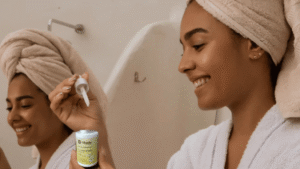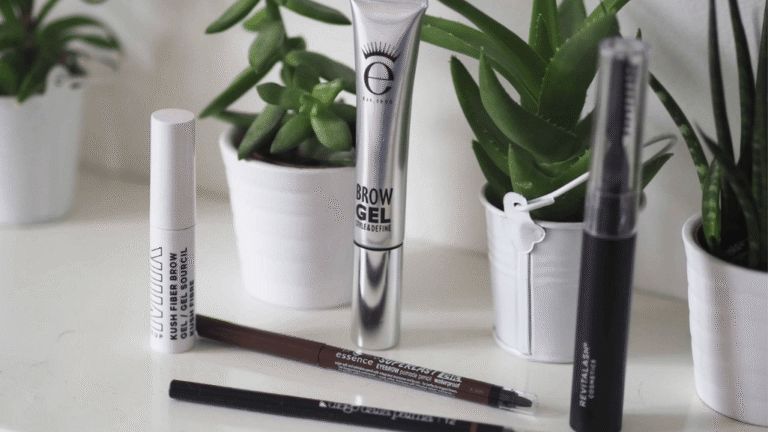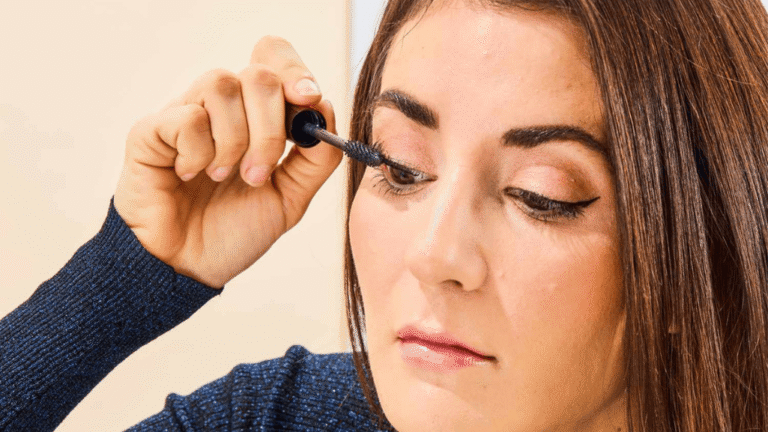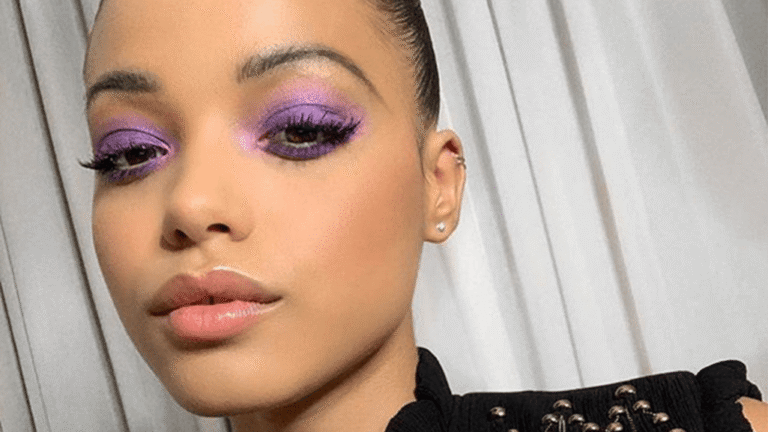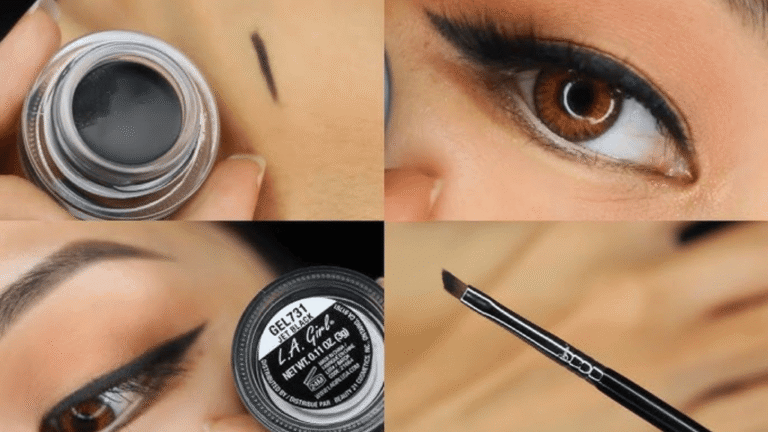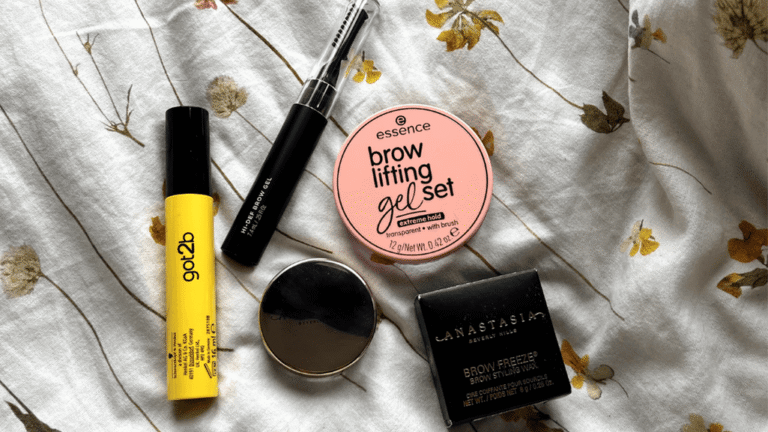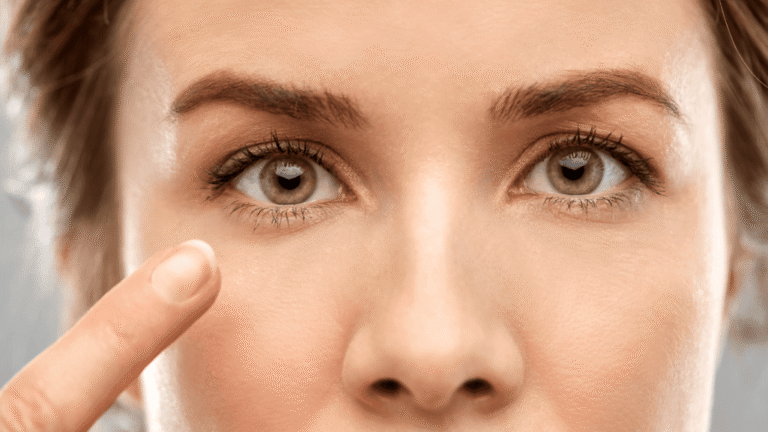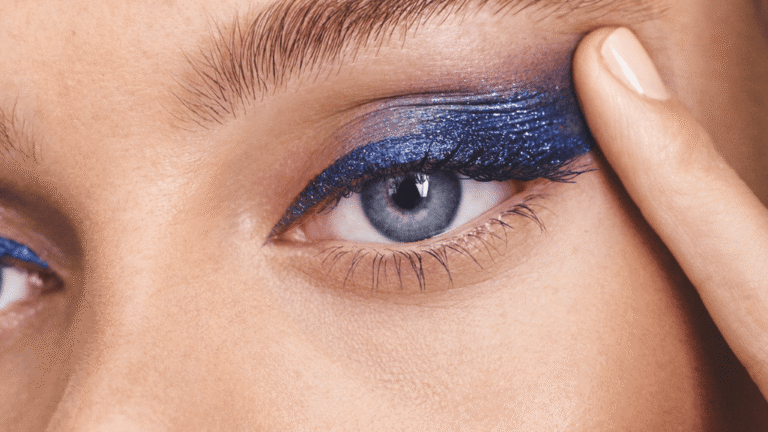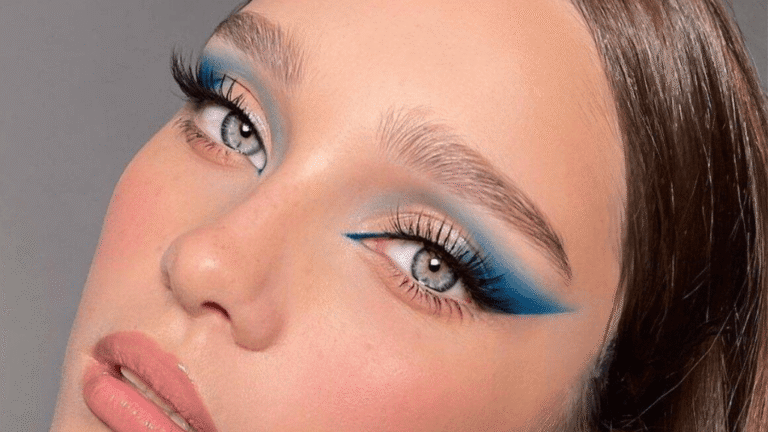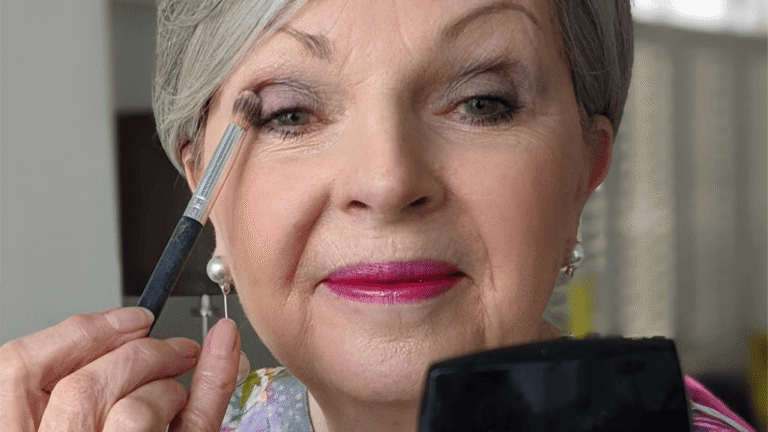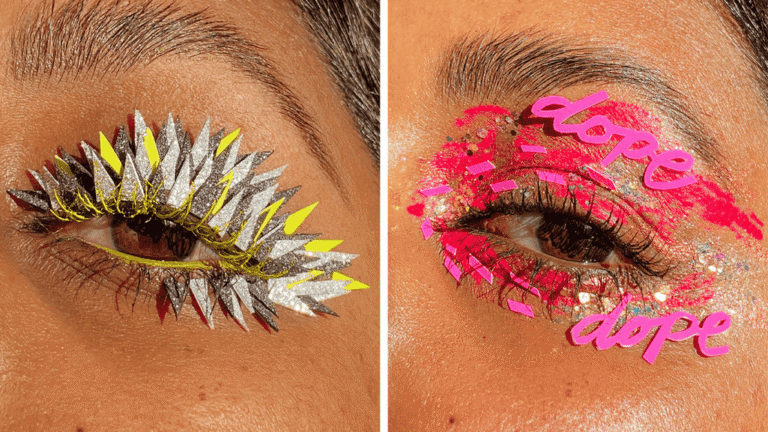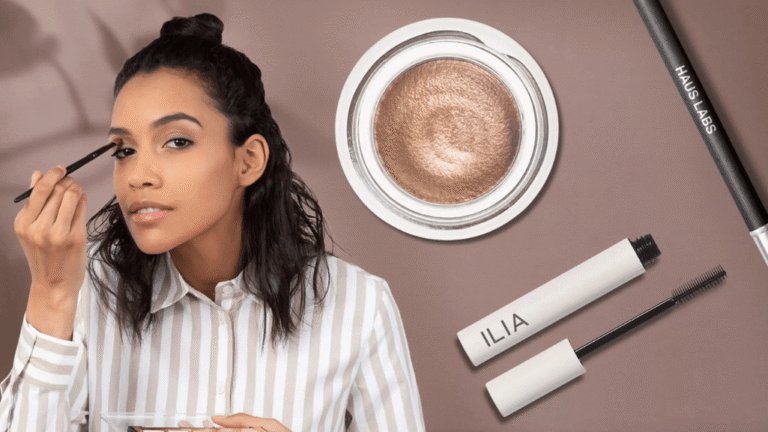Color correcting is a popular technique in the world of makeup that involves using different colored products to neutralize specific skin concerns. Whether you’re dealing with redness, dark circles, or dull skin, color correcting can help you achieve a flawless complexion. Understanding the color wheel is key to mastering color correction.
Key Takeaways:
- Color correcting involves using different colored products to neutralize specific skin concerns.
- Colors on opposite sides of the color wheel cancel each other out when layered together.
- Green corrects redness, orange counteracts dark circles, and purple brightens dull skin.
- Choose color correctors based on your specific skin concerns and tone.
- Apply color correctors before foundation for an even complexion.
The Science Behind Color Correcting Makeup
Color correcting is a technique that utilizes the principles of the color wheel to neutralize specific skin concerns. By understanding how colors interact with each other, you can effectively correct and balance out discolorations for a flawless complexion.
The color wheel is a visual representation of the relationships between colors. Colors that are opposite each other on the color wheel are known as complementary colors. When these complementary colors are mixed or layered together, they cancel each other out, effectively neutralizing the targeted discoloration.
Here are some key color corrections and their complementary colors:
- Green: Green corrects redness in the skin. If you have rosacea or redness around your nose and cheeks, applying a green color corrector can help balance out the redness.
- Orange: Orange counteracts dark circles under the eyes. If you struggle with dark under-eye circles, using an orange color corrector can help brighten and camouflage the darkness.
- Purple: Purple brightens dull skin. If your complexion looks lackluster or sallow, using a purple color corrector can impart a fresh and radiant glow.
By knowing which colors to use for specific skin concerns, you can target and correct discolorations effectively. The color wheel serves as a guide to help you choose the right color correcting makeup for your individual needs.
Understanding the science behind color correcting can empower you to achieve a flawless complexion by effectively neutralizing and balancing out skin concerns. In the next section, we will explore the different color correctors available and how to choose the right ones for your specific needs.
Choosing the Right Color Correctors
When it comes to color correctors, selecting the right ones for your specific skin concerns and skin tone is essential. Different colors and shades can address a variety of issues, providing targeted correction for a flawless complexion. Let’s explore the best color correctors for various concerns and skin tones:
Pink Hues for Brightening Dull Skin
If you have dull or tired-looking skin, pink color correctors can work wonders. Pink hues help to brighten the complexion, giving it a fresh and radiant appearance. By counteracting any sallowness or discoloration, pink correctors create a more even skin tone. Consider trying color correctors like the Bobbi Brown Skin Corrector Stick or the Charlotte Tilbury Magic Vanish for an instant glow-up.
Yellow Tones for Hyperpigmentation and Mild Redness
If you’re dealing with hyperpigmentation or mild redness, yellow color correctors are your go-to solution. Yellow tones help to neutralize these uneven skin tones, leaving you with a more balanced complexion. Look for color correctors like the Fenty Beauty Match Stix Corrector Skinstick or the Bobbi Brown Skin Corrector Stick to even out your skin tone and achieve a natural look.
Peach and Orange Shades for Dark Under-Eye Circles
Dark under-eye circles can be a common concern for many individuals. To combat this issue, peach and orange color correctors are highly effective. These shades work to counteract the dark pigmentation under the eyes, brightening the area and making you look more awake. Recommended products for battling dark circles include the Fenty Beauty Match Stix Corrector Skinstick and the Charlotte Tilbury Magic Vanish.
Green Correctors for Redness
If you have redness or rosacea, green color correctors can help neutralize the flushed areas. Green hues are opposite to red on the color wheel, allowing them to cancel out the redness on your skin. To achieve a more even complexion, consider using the Bobbi Brown Skin Corrector Stick or the Fenty Beauty Match Stix Corrector Skinstick.
Lavender Shades for Brightening Dull Skin
For those with dull or tired-looking skin, lavender color correctors can provide an instant pick-me-up. Lavender hues impart a fresh and illuminated glow to the complexion, making the skin appear more radiant. To achieve this effect, try color correctors like the Charlotte Tilbury Magic Vanish or the Fenty Beauty Match Stix Corrector Skinstick.
When choosing among the myriad of color correctors available on the market, keep your specific concerns and skin tone in mind. Experiment with different shades and products to find the ones that work best for you. Remember, color correcting is all about achieving a flawless complexion by addressing specific skin concerns with precision and care.
Application Techniques for Color Correcting

To achieve the best results with color correctors, it’s important to apply them correctly. The way you apply color correctors can make a significant difference in achieving precise coverage and a flawless finish. Here are some application techniques to help you master the art of color correcting:
1. Apply before foundation (except for under-eye bags and blemishes)
When using color correctors, it’s generally recommended to apply them before foundation. This allows the correctors to neutralize any skin concerns effectively. However, when targeting under-eye bags or specific blemishes, it’s best to layer the color correctors on top of your foundation to ensure precise coverage.
2. Be precise with product placement
To achieve the desired effect, it’s crucial to apply color correctors precisely to the areas that require correction. Using a small, precise makeup brush or your fingertips, gently tap or blend the corrector onto the specific problem areas. This technique ensures that the corrector is evenly distributed and seamlessly blends into your skin.
3. Experiment with different application techniques
There are various ways to apply color correctors, and the technique you choose can affect the coverage and blending. Here are a few popular application methods:
- Finger tapping: Gently tap the color corrector onto the targeted areas using your fingertips. This technique provides more control and allows for precise application.
- Brush application: Use a small, synthetic brush to apply and blend the corrector. This method is ideal for achieving a more airbrushed effect and seamless blending.
- Sponge blending: Dampen a makeup sponge and lightly dab it onto the corrector, then blend onto the skin. This technique is great for achieving a natural and diffused finish.
Remember, the application technique you choose may vary depending on the texture and formula of the color corrector. It’s always a good idea to experiment and find the method that works best for you.
By following these application techniques, you can make the most out of your color correctors and achieve a flawless complexion with precise coverage. Don’t be afraid to experiment and find the methods that suit your skin type, concerns, and personal preferences.
Multi-Tasking Color Correctors
For those looking to save time and money, multi-tasking color correctors are the ultimate solution. These innovative products are designed to address multiple skin concerns in one convenient formula, making them a time-saving essential in any makeup routine. By combining different colors, these color correctors effectively neutralize various tones in the complexion, providing overall tone correction.
What sets multi-tasking color correctors apart is their unique combination of skin care and makeup benefits. These products are true skin care-meets-makeup hybrids, as they are infused with active ingredients that not only correct but also treat specific skin concerns. Say goodbye to the hassle of layering multiple products and hello to a simplified beauty routine.
Let’s take a look at some excellent examples of multi-tasking color correctors:
1. Stila One Step Correct Brightening & Correcting Primer
This multi-tasking color corrector from Stila is a true game-changer. As a primer, it creates a smooth base for foundation while neutralizing redness, discoloration, and dullness. The unique formula contains three color correcting pigments:
- Green: Counteracts redness
- Lavender: Neutralizes yellow undertones and brightens
- Peach: Corrects dark circles and hyperpigmentation
This luxurious loose powder from Givenchy not only sets your makeup for long-lasting wear but also offers color correction benefits. The powder consists of four different shades that can be blended together to create a customized color correction effect:
| Shade | Effect |
|---|---|
| Lilac | Brightens dull skin |
| Green | Neutralizes redness |
| Peach | Warms up the complexion and minimizes dark circles |
| Yellow | Counteracts dark spots and discoloration |
With these multi-tasking color correctors, you can simplify your beauty routine while achieving flawless, balanced skin. Say goodbye to multiple products and hello to an easy, time-saving solution.
Color Correctors with Added Benefits
In addition to traditional color correcting products, there is a new wave of color-correcting products on the market that offer added benefits. These products not only cover and camouflage skin concerns but also include active ingredients that treat the issues at the source.
For example, the Caudalie Vinopure Color Correcting Spot Solution contains zit-zapping salicylic acid to deliver coverage and clarity. The formula not only corrects the appearance of blemishes but also helps to treat and prevent breakouts. The OLEHENRIKSEN Banana Bright+ Vitamin CC Eye Sticks provide brightening vitamin C and effectively neutralize dark areas of the face. This product not only color corrects under-eye circles but also nourishes the delicate skin in the eye area.
| Product | Benefits |
|---|---|
| Caudalie Vinopure Color Correcting Spot Solution | Zit-zapping salicylic acid for coverage and clarity |
| OLEHENRIKSEN Banana Bright+ Vitamin CC Eye Sticks | Brightening vitamin C that neutralizes dark areas |
These color correcting formulas offer both corrective and skincare benefits, making them a valuable addition to any makeup routine. With their active ingredients, they not only provide coverage but also address the underlying skin concerns.
Next, we will discuss the various formula options available for color correcting, including color correcting primers, color correcting concealers, and color correcting powders.
The Ultimate Guide to Color Correcting Formulas
Color correcting formulas offer a range of options to address different needs and preferences. Whether you’re looking for a light and even correction or more pigmentation for targeted areas, there’s a formula that’s perfect for you. Here are the main types of color correcting formulas to consider:
1. Color Correcting Primers
Color correcting primers are ideal for issues that cover a larger portion of the face. These primers provide a light and even correction, creating a smooth canvas for your foundation. They come in different colors to target specific concerns, such as redness, dullness, or sallowness. Color correcting primers are applied after moisturizer and before foundation for a seamless finish.
2. Color Correcting Concealers
If you have smaller areas of serious discoloration, such as under-eye circles or red acne patches, color correcting concealers are your best bet. These concealers offer more pigmentation and provide intense color correction where you need it most. They come in various shades to address different concerns, allowing you to achieve a flawless complexion. Color correcting concealers are typically applied after foundation for precise coverage.
3. Color Correcting Powders
Color correcting powders can be used as a finishing touch to set your makeup and provide a subtle color correction. They are typically applied after other makeup products, such as foundation and concealer. However, it’s important to note that the effectiveness of color correcting powders may vary depending on the product and your specific concerns. It’s best to experiment and find the right powder formula for your needs.
Comparison of Color Correcting Formulas
| Formula Type | Best For | Application |
|---|---|---|
| Color Correcting Primers | Issues covering a larger portion of the face | Applied after moisturizer and before foundation |
| Color Correcting Concealers | Small areas of serious discoloration | Applied after foundation for precise coverage |
| Color Correcting Powders | Setting makeup and subtle color correction | Applied after other makeup products |
When choosing a color correcting formula, consider your specific concerns and application preferences. This ensures that you get the best results and achieve your desired color correction. Experimentation is key to finding the formula that works best for you.
Conclusion
Color correcting techniques can be a game-changer when it comes to achieving a flawless complexion. By understanding the color wheel and choosing the right color correctors for your specific skin concerns, you can effectively neutralize and correct any unwanted discolorations or imperfections.
Applying color correctors precisely and using multi-tasking products or formulas with added benefits can not only save you time but also provide additional skincare benefits. With experimentation and practice, you can master the art of color correction and achieve a complexion that looks naturally flawless.
Remember, effective color correction is all about finding the right technique for your unique skin tone and concerns. Don’t be afraid to try different products and application methods until you find what works for you. With the right color correcting techniques, you can enhance your natural beauty and unlock the secret to a flawless complexion.
Frequently Asked Questions
How does color correcting work?
Color correcting works by using colors on the opposite sides of the color wheel to neutralize specific skin concerns. For example, green corrects redness, orange counteracts dark circles, and purple brightens dull skin.
How do I choose the right color correctors for my skin?
When choosing color correctors, it’s important to consider your specific skin concerns and skin tone. Pink hues work well for brightening up dull skin, yellow tones cancel out hyperpigmentation, peach and orange shades counteract dark under-eye circles, green correctors cancel out redness, and lavender shades brighten dull skin.
What are some recommended color corrector products?
Some recommended color correctors include Bobbi Brown Skin Corrector Stick, Fenty Beauty Match Stix Corrector Skinstick, and Charlotte Tilbury Magic Vanish.
How do I apply color correctors?
Color correctors should be applied before foundation, except for those targeting under-eye bags and blemishes, which should be applied after foundation for precise coverage. It is important to apply color correctors precisely to the areas that require correction for a flawless finish.
Are there multi-tasking color correctors available?
Yes, there are multi-tasking color correctors available that can address multiple skin concerns in one product. These color correctors combine different colors to neutralize various tones in the complexion, providing overall tone correction.
Are there color correctors with added skincare benefits?
Yes, there are color-correcting products on the market that not only cover and camouflage skin concerns but also include active ingredients that help treat the issues at the source. Examples include Caudalie Vinopure Color Correcting Spot Solution and OLEHENRIKSEN Banana Bright+ Vitamin CC Eye Sticks.
What are the different options for color correcting formulas?
Color correcting formulas come in various options such as color correcting primers, color correcting concealers, and color correcting powders. Color correcting primers provide light and even correction for larger portions of the face, while color correcting concealers offer more pigmentation for smaller areas of serious discoloration. Color correcting powders can be used as a topper after other makeup is applied.








